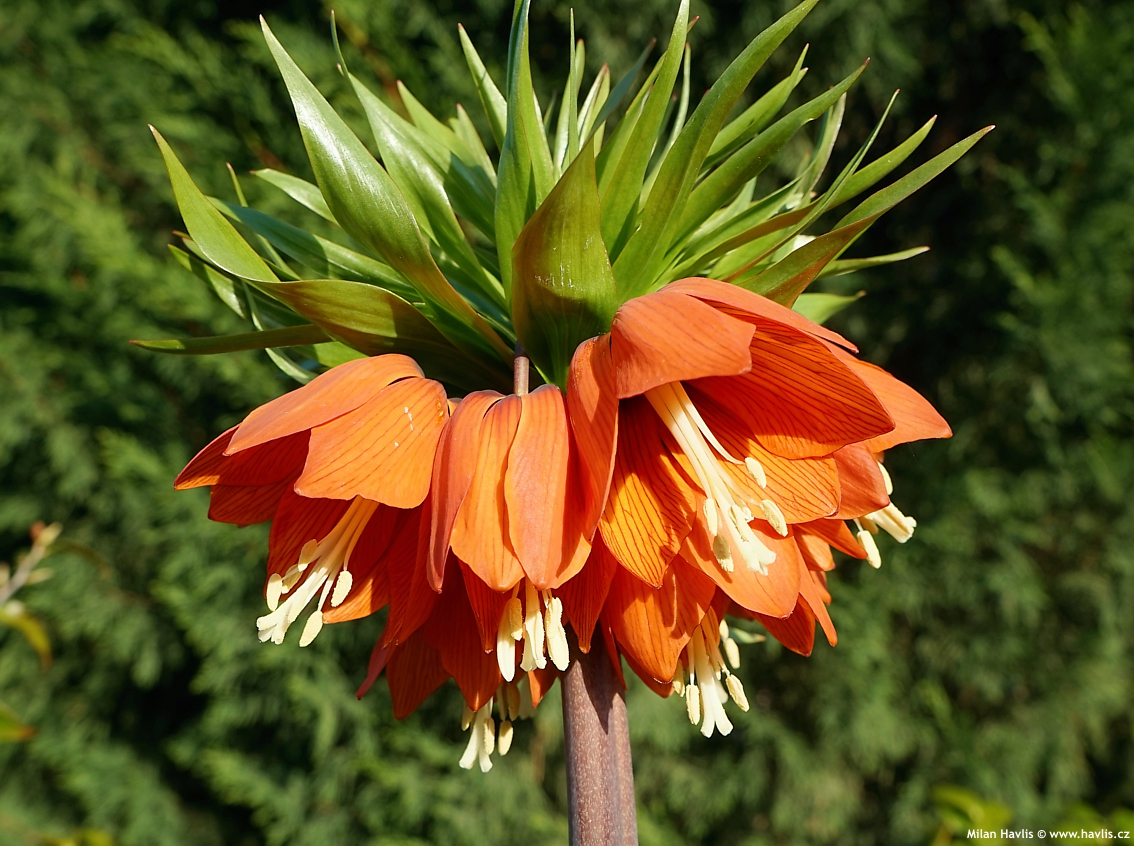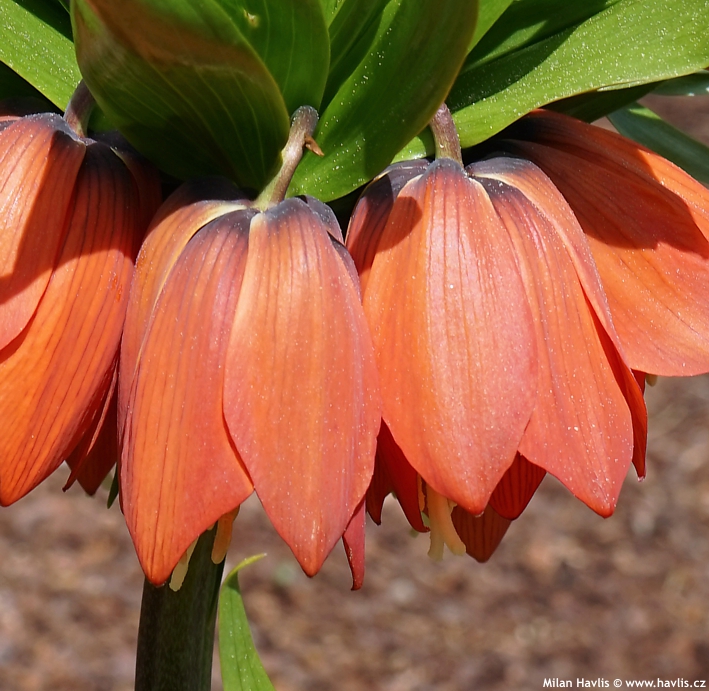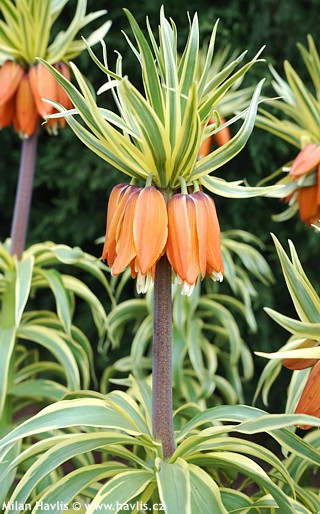Fritillaria imperialis 'WILLIAM REX' crown imperial


Fritillaria
Crown imperial is an old-fashioned yet beautiful bulb perennial which, as I remember, was cultivated in almost every cottage garden when I was a kid. It is an oriental plant from Asia, with a natural habitat reaching from south Turkey to Kashmir. In mid spring, before the grass has shown its fresh green colour, in flower beds rose sturdy stems with magnificent, commonly orange, bell-shaped flowers topped with a crown of glossy leaves. Its second name imperialis was chosen aptly because its beauty and majesty confirms its royal origin.Grow it in humus-rich, deep soil which should not dry out often but never stay water-logged which commonly leads to rotting. The bulbs are tender so be careful handling them, and put them four times as deep in the ground as they are tall. After flowering the leaves slowly wither but they may not be removed because the bulb is gaining strength for the following year using them. It is a good time for fertilizing. We suggest a neighbour planting a late emerging, preferably summer flowering, spreading perennial which will cover the empty spot after crown imperial's leaves disappear so that the bed is not empty until the end of the season. Make sure to mark the spot where the bulbs are not to dig there in error anymore. Hardy to about -27°C (USDA zone 5b).
Last update 22-04-2019
Goods are shipped all over Europe. For Russia and U.K. and for further details please read about SHIPPING OPTIONS HERE.
Are you interested in a serious discount for orders NOV-FEB? Check your options here.
THE PRICES INCLUDE VAT of 15%. For quick conversion you can use 1 CZK = approx. 0.04 EUR
- STANDARD QUALITY - Plants of this group are 1st class quality with number of branches and overall density adequate to their size and age, considering they were container grown.
- DE LUXE QUALITY - This label guarantees a luxurious quality of manually selected plants that, compared to their height and age, are exceptionally dense and beautiful.
- EXTRA - These plants are usually mature and bigger specimens with exceptional overall appearance.
- STANDARD (as described in the plant form) means a tree with a trunk of 190-210 cm and a crown at the top, unless specified differently. The commercial size for trees is their girth measured in the height of 1m from ground.
- HOBBY - These plants are of the same quality as our standard-quality plants but younger and therefore cheaper.
- SHRUB - a woody plant with branches growing bushy from the ground level.
- HALF-STANDARD or MINI-STANDARD - a small tree with shorter trunk, its size is usually specified.
- FEATHERED - These are trees with branches growing already from the base of the trunk and up along the stem.
- GRASSES and PERENNIALS - Sizes given usually read the diameter of the pot or the clump, as specified.


















